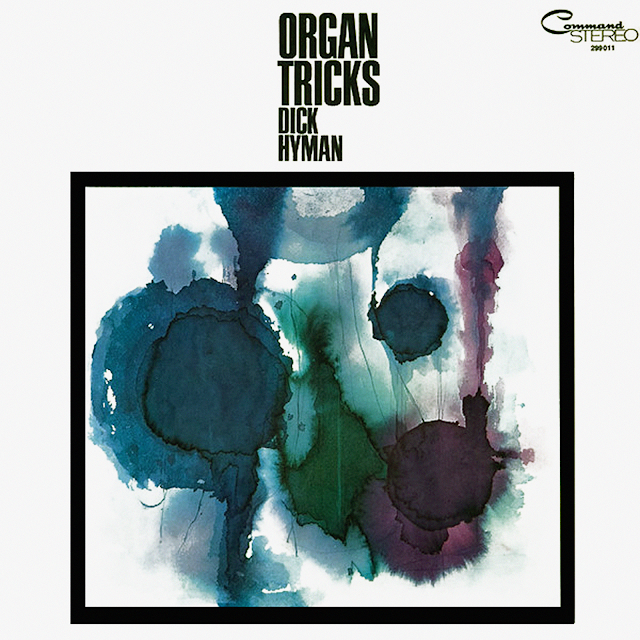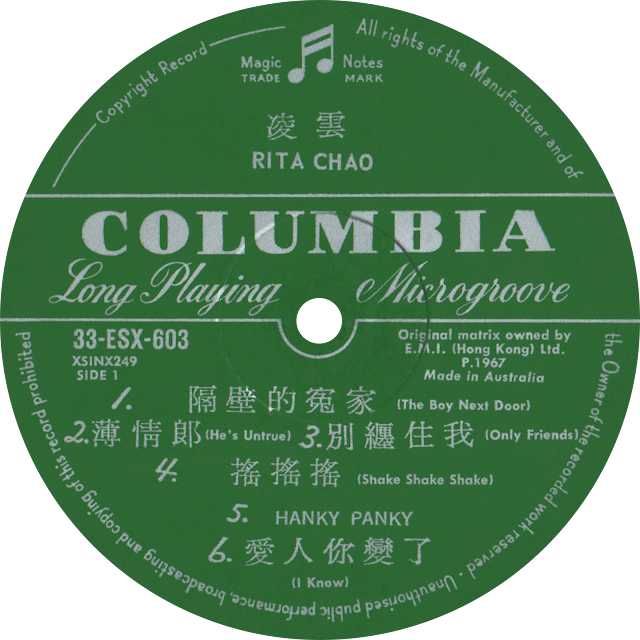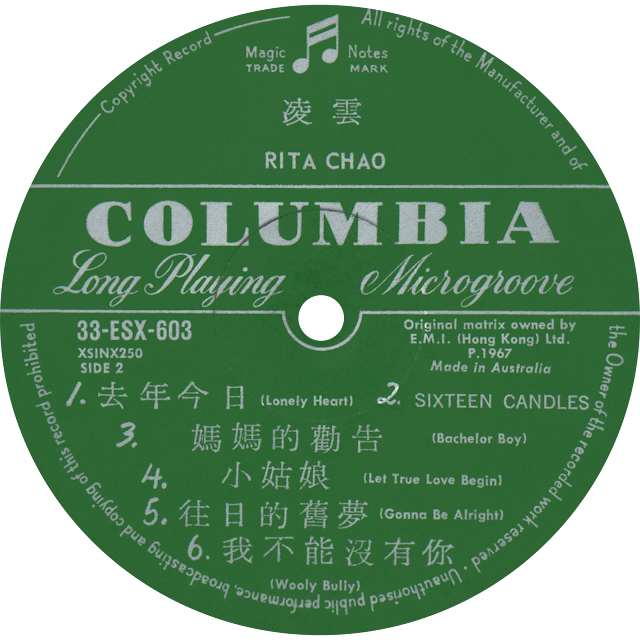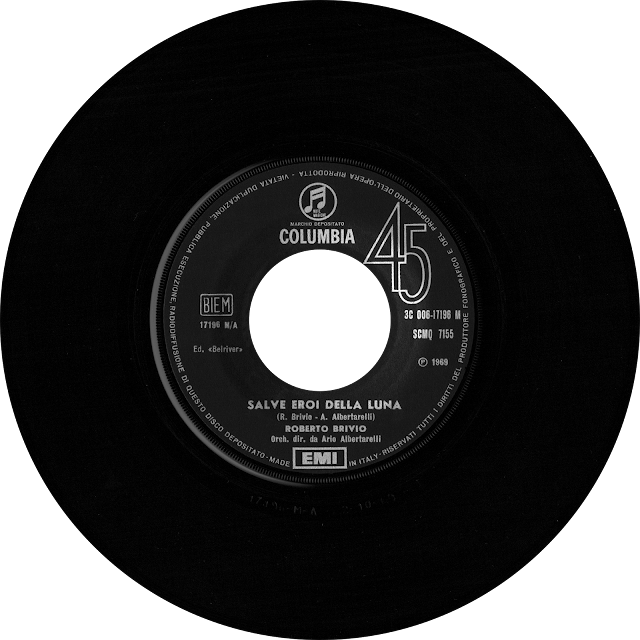Breathtaking, dazzling, sinuous and sensuous...
...bursting with driving rhythms...
...sparkling with humor that is sometimes sly, sometimes wildly exhilarating.
That's the inimitable Dick Hyman formula as this master of the modern organ combines the miraculous resources of this amazing instrument with a brilliant group of guitarists and percussionists to lure more excitement from these themes than anyone suspected was in them.»
[from the back sleeve notes of "The Man From O.R.G.A.N."]

Richard "Dick" Hyman (born March 8, 1927, New York City) is an American Jazz pianist/keyboardist and composer, best known for his versatility with Jazz piano styles. Over a 50-year career, he has functioned as a pianist, organist, arranger, music director, and, increasingly, as a composer. His versatility in all of these areas has resulted in well over 100 albums recorded under his own name and many more in support of other artists. [1]
Hyman's career is pretty intimidating in its achievements and scope. He has scored, arranged and/or performend for Broadway, movies, television and live radio, and he's recorded in every format, from 78s to CD-ROMs. He's got a whole gamut of music genres covered, from Jazz and Blues to Classical to Pop and Electronic Psychedelia. Hyman is exceptionally renowned as a professional musician, and was inducted into the Jazz Hall of Fame in 1995. His articulate and wry anecdotes, commentary on the business, and techniques of making music have been published along with sheet music in a series of books. [2]

Beginning in the mid-1950s he started recording with his own name for MGM. His cover of "Moritat", on harpsichord with his trio, sold over a million copies in 1956 and was the most successful recording of the tune until Bobby Darin did it as "Mack the Knife". He was the musical director of The Arthur Godfrey Show from 1958 to 1961. He was an early staple of Enoch Light's Command label, for which he recorded light classical, swinging harpsichord, funky organ, and "now sound" combo albums. He also demonstrated his continuing interest in new keyboard instruments, releasing two of the earliest Moog albums. Hyman has stayed in demand as much as any musician around, working for TV, scoring film soundtracks for Woody Allen, and, more recently, as a Jazz pianist and organist. [3]
After taking care of Dick Hyman's Electronic / Experimental triptych consisting of the 1963 masterpiece "Moon Gas" - credited to him and Mary Mayo, and covered both in mono and stereo - and the two supercool and fresh - still fifty years later! -1969 Electronic Pop / Moog seminal albums "Moog - The Electric Eclectics of Dick Hyman" and "The Age of Electronicus" (...available respectively, here and here...), it's now time to deepen our exploration of the large Hyman catalogue by dealing with The Great TV and Movie Spy Themes as offered on the gorgeous "The Man From O.R.G.A.N.". So, put on your shades, hat and raincoat and let the journey begin!
Sources:
[1] from Wikipedia
[2] from the introduction to an interview with Dick Hyman conducted by Michael David Toth, published on Cool and Strange Music!, issue #7, 1997
[3] from Space Age Pop Music

"The Man From O.R.G.A.N." outer gatefold reconstruction (with sticker on front)

"The Man From O.R.G.A.N." inner gatefold reconstruction

The following liner notes, written by an unknown author, are included in the inner gatefold of "The Man From O.R.G.A.N.". They describe the evolution of both the characters and the music that Spy Movies underwent through since the early days of the genre, and delve into the tricks Hyman adopted to achieve some of the particular sounds featured on the album, which were performed on two different models of Lowrey organs.
«The indestructible James Bond and the other fictional espionage agents who have come along in his glamorous wake have inspired a set of television and movie themes which pick up where the earlier private eye themes of the Dragnet and Peter Gunn vintage left off. Just as Bond, The Man From U.N.C.L.E. and Honey West (to pick three quite different types) represent a more fantastically larger than life breed of agent than such relatively earthbound operatives as Gunn or the laconic sergeant of Dragnet, the music that goes with today's agents has far greater scope and range than the earlier private eye themes did. No longer is it enough to be sombre or menacing or broadly mysterious. Today's themes can also be tongue-in-cheek or completely dominating, exotic or explosive, gentle to the ear or blindingly intense.

"The Man From O.R.G.A.N.", original inner sleeve shows Command goodies...
Dick Hyman's explorations of the musical possibilities of the Lowrey organ, - explorations which have constantly added to the world's knowledge of what this unique new instrument is capable of (documented in his series of Command albums) - have made him familiar with the ways in which this organ can supply an inimitable sense of excitement for all kinds of music. Most particularly, he knows more about how to use it to create the tension and exhilaration that are an inherent part of so much of the music that gets people out on a dance floor these days. That very contemporary sound can be heard all through his unusual interpretations of these spy themes. But, since Hyman is a highly imaginative musician, every one of these pieces has unique, personal touches that come not only from his own musical creativity - the use of unexpected styles and tempos, for instance - but they carry an undercurrent of humor that is particularly appropriate in view of the element of fantasy inherent in the incredible activities of these agents. One of the advances that Dick Hyman makes in his development of the Lowrey organ in this collection comes through his use of a second organ, the Lowrey Theater Model, on two selections - on his integration of "The Third Man Theme" with the "Danger" theme and on "The Cat". Some aspects of the Lowrey Theater Model cannot be transferred to a recording. In design, it is a miniature version of those huge consoles that once rose out of the lower depths of movie palaces. The various tabs used for selecting special sound effects light up in multi-colored hues when they are put to use, just like those movie palace organs did. This, of course, you cannot see on a record. The aspect of the Lowrey Theater Model that can be heard on a disc is that, like those mighty movie theater monsters, it can simulate a wide array of sounds that are not available on the usual contemporary electronic organ. There is a marimba tremolo, the sound of wood blocks, of bongos - all of which Hyman uses for fascinating effects on these selections. On his regular Lowrey organ, Hyman ranges from a cathedral sound to the plaintive cry of the Nashville sound. He builds his arrangements on styles as varied as the Bossa nova, a 5/4 beat and an overwhelmingly hard-driving twist. Working with him is a three-man guitar section made up of Tony Mottola, Al Casamenti and Bucky Pizzarelli, a three-man percussion section - Osie Johnson, Bobby Rosengarden and Phil Kraus - and a one-man bass section, Bob Haggart.»

...and more goodies on the back!

"The Man From O.R.G.A.N." contains the following tracks:
01. The Liquidator (2:38)
02. The Third Man Theme & 'Danger' Theme (3:33)
03. The Man From O.R.G.A.N. (2:19)
04. Theme For 'Honey West' (2:28)
05. Theme From 'I Spy' (2:16)
06. A Man Alone (3:21)
07. Thunderball (2:44)
08. Mister Kiss Kiss Bang Bang (2:23)
09. The Man From U.N.C.L.E. (2:32)
10. The Cat (2:43)
11. Theme From 'The Spy Who Came In From The Cold' (2:56)
12. Agent Double-O-Soul (2:52)
All tracks were remastered from the original vinyl in May 2019 and are available in FLAC lossless format along with complete artwork reconstruction and printable PDF files.
As usual, please have a look at the comments for the download links.

Dick Hyman, circa 1965-1966
Here's the complete credits and personnel list of the album:
Dick Hyman: Lowrey organ, Lowrey Theatre organ
Bob Haggart: bass
Tony Mottola, Al Casamenti and Bucky Pizzarelli: guitars
James "Osie" Johnson, Bobby Rosengarden and Phil Kraus: drums and percussion
Tony Mottola: piano on "Agent Double-0 Soul"
Arranged by Dick Hyman.
Associate producers: Robert Byrne and Julie Klages
Recording chief: Fred Christie
Stereo Mastering: George Piros
Monoaural mastering: John Johnson
Front cover drawing: Charles E. Murphy


Coming about halfway in the long series of albums that Dick Hyman released on the label, "The Man From O.R.G.A.N." was published by Command Records sometime around February 1966 with catalogue number RS 891 SD. The album was also made available as a reel-to-reel tape with catalogue number RS 4T 891.
All the Internet sources that offer information about this LP seem to place it in 1965, but I don't believe this is correct, even thought such date is printed on both the front cover and the back sleeve of the album...: the film "Thunderball" - whose theme is included on the album - was premiered in the U.S. no earlier than 21 December 1965 and the first adverts for "The Man From O.R.G.A.N." started appearing on Billboard in the first months on 1966... The 'Command New Direction / New Sound 66' ad that you can see below was published on the 4 March 1966 issue, so I would say that February 1966 is probably the most accurate release date.
As in the best Command tradition, the LP comes in a sturdy gatefold sleeve that offers plenty of information about the recordings. Some copies of the album - including mine - boast an oval red sticker with track titles affixed to the front cover. The artwork in uncredited in the liner notes, but the front cover lower right corner is unmistakeably signed Charles E. Murphy, who at the time was Command's Art Director.
Half of the tracks on "The Man From O.R.G.A.N." were also released as a 7" EP which featured the same title and cover. Oddly enough, for the German market the album was completely repackaged and had its original title changed to "Organ Tricks" thus omitting any reference to the theme that inspired it...

The following track-by-track commentary is a slightly edited version of the original liner notes included in the inner gatefold of the album.
Side 1 opens with "The Liquidator", a big, bright, driving theme for the film of the same name, written by Lalo Schifrin. On this number, Dick Hyman uses a rising, ringing sound in the introduction that is one of the basic musical techniques devised for background on radio mystery dramas. Notice the vast freedom with which he swings out on his organ as the piece builds in intensity and how his use of breaks under the organ serves to increase that intensity to a degree of almost unbearable exultation.
Hyman decided to combine "The Third Man Theme & 'Danger' Theme" not only because they seemed to go together in a very natural fashion, but because he had been impressed with the use made of montaging themes on The Defenders, a television series on which he has occasionally played. It was not until Hyman brought his arrangement into the recording studio that he learned from Tony Mottola, who plays guitar in Hyman's group and who wrote the "Danger Theme", that this was actually inspired by "The Third Man Theme". At the time Mottola wrote it, early in the Fifties, "The Third Man Theme" was at the height of its popularity. Yul Brynner, who produced Danger (this was before Brynner became famous as an actor and singer in The King and l) wanted a theme that was similar to The Third Man but he didn't want to use a zither, because that was the instrument in The Third Man, and he felt piano and organ were too usual. This led to the choice of a guitar and, when Mottola came up with the now familiar "Danger Theme", he became the guitarist on the long-running series. All through the changes in tempo in this arrangement by Hyman, Mottola is playing "Danger" on his guitar while Hyman, on organ, stays with "The Third Man". Hyman uses the Lowrey Theather Model organ here, creating the carousel effect with it and achieving the atmospheric fogginess during the shift in tempo through a discreet use of tremolo.
Written by Dick Hyman, "The Man From O.R.G.A.N." is the only original composition on the album. Hyman's keen ear for irony has led him to represent this fictional espionage agent in a Southern style. The Nashville sound seemed to him to be right for this piece primarily because it would catch the listener off guard by being the very opposite of what might be expected. Then, too, its brightness serves as an interesting contrast to the minor quality of most spy themes.

"Command New Direction New Sound '66", an advert published on the March 4, 1966 issue of Billboard
"Theme For 'Honey West'" follows. The feminine quality of Honey West, played by Anne Francis on television, is suggested by Hyman's treatment of her theme. Over an easy, bouncy introduction, the organ comes on in low, sinuous fashion, then suddenly rises to a lovely lyrical passage. The tinkling 'swoosh' that crops up several times toward the end is a Chinese bell tree, ministered to by Phil Kraus.
According to Hyman, "Theme From 'I Spy' is a bit of scored confusion - «sort of like Charles lves.» Although the 'I Spy' television series, in which Bill Cosby and Robert Culp are starred, usually uses Hong Kong as a locale, Hyman subtitled this arrangement 'A Tone Poem of a New York Traffic Jam' («My experience has been with New York traffic»", he explained). To supplement the confusion and clamor that Hyman and his group create instrumentally, simulating auto horns and a hubbub of nervous clamor, he added three girls to contribute some "oo-oo" accents to the melee. The other voices you hear are Tony Mottola («Move over!») and Bob Haggart. Guitarist Al Casamenti churns a real ambulance siren and Phil Kraus caps the production by chiming out "Adeste Fidelis" and "The Bells of St. Mary" in keys that have no relation to anything else that's going on.
Closing Side 1, Hyman's bossa nova treatment of "A Man Alone" - from the film 'The Ipcress File' - is a distinct departure from the usual espionage themes... With Tony Mottola supplying an introductory bossa nova beat, underlined by the insistent rhythm of claves combined with a Chinese wood block, Hyman's organ moves into the melody in a richly romantic fashion. All through this piece, he makes very distinctive use of the warm, deep sounds of his organ, building an atmosphere that is broad and expansive over the usually miniaturizing effect of a bossa nova rhythm.
Side 2 starts with "Thunderball". The theme of the then most recent James Bond film roars out of Hyman's arrangement with a brilliant dramatic flair. The beat provided by guitars and percussion is intense and relentless, augmented by a beanbag ashtray held close to a microphone and tapped to create an effect somewhat like maracas. The galloping guitars are led by Al Casamenti who admitted that his right hand felt as though it was going to fall off before he got through three minutes of this driving pace. The high, piercing passages on the organ are played by the piccolo attachment - Hyman uses it to get something akin to the unworldly sound of an Ondioline.
"Mister Kiss Kiss Bang Bang", also from Thunderball, takes note of the name by which James Bond, because of his most egregious activities, is known in some sections of Europe. Both the breathless voice and the response to it by triangle and tympani were directly suggested by the lyric. «There is a sibilance in the title that appealed to me», Hyman declared. The result is, he says, «a sort of singing song title.» The singer, incidentally, is Dick Hyman.

The German edition of the album was re-titled "Organ Tricks" and completely repackaged...
Hyman plays the theme from "The Man From U.N.C.L.E." in the same way that it was done on the air (at least, the way it was sometimes done - the television version occasionally changed a bit). It is played in 5/4 time - even the gun-shots are orchestrated in that tempo. Although 5/4 is an extremely difficult tempo to maintain on this tune because the melody does not fall into it naturally (and consequently it is more apt to be played in 4/4), Hyman has stayed with the original tempo because it gives the tune the nervous, syncopated feeling it must have to achieve its dramatic effect.
"The Cat", Lalo Schifrin's composition for a movie called "Joy House" can be listened to from a variety of angles. On the surface, it is a superb and lively bit of music for twisting. Just under the surface, though, you will find Dick Hyman's sense of humor at work. "The Cat" was a big hit for Jimmy Smith, the jazz organist who is noted for his hip use of funky sounds. Hyman felt that he could create a striking example of 'camp' by applying an old fashioned sound to Jimmy Smith's funky way of playing the music. To get that sound, Hyman used the Lowrey Theater Model organ and, while he was at it, he threw in occasional sounds of wood blocks and bongos from the organ's array of extra effects. He did this even though he had live bongo and wood block players with him in the studio. But using the synthetic sounds, he felt, added to the 'camp' quality of the piece.
Even more of a departure from the espionage mood than the bossa nova treatment of "A Man Alone" is this sensitive and thoughtful approach to the "Theme From 'The Spy Who Came In From the Cold'", a tune which reminded Hyman of a Chopin nocturne. The music box effect with which it opens is produced by Hyman at the organ, using a piccolo sound with a great deal of reverberation added. The range of the organ is suggested by the sonic distance from this small, close-up effect to the huge cathedral sound which he later switches to. The gentle, subdued guitar passage is played by Tony Mottola.
The ringer "Agent Double-0-Soul" does not come from either a movie or a television series, and it is further evidence of Hyman's sly humor. He first heard the piece on a record by Edwin Starr which was brought to Hyman's attention by his 14-year-old daughter who keeps him au courant on musical matters directed at the teen set. Initially he was amused by the title but then it struck him that «this was a blues commentary on the whole James Bond scene.» So he shot the works on it: The Girls are back again to give a proper shouting quality to the roaring beat. There is the sharp, insistent rhythm of two drum sticks whacked together. And when Hyman decided that a pianist was necessary to carry out the total effect properly, Tony Mottola laid down his guitar and made his recording debut on piano.

The following clips offer a complete preview of the remastered album, enjoy!

More information about Dick Hyman and "The Man From O.R.G.A.N." is available here:
http://www.dickhyman.com/
http://en.wikipedia.org/wiki/Dick_Hyman
http://www.spaceagepop.com/hyman.htm
http://www.discogs.com/artist/15443-Dick-Hyman
http://moogfoundation.org/moog-a-history-in-recordings-dick-hyman-master-stylist-of-the-moog-modular/
http://tapeop.com/interviews/92/dick-hyman/
http://tapeop.com/articles/92/dick-hyman-bonus/
https://www.moogmusic.com/news/happy-birthday-dick-hyman-0
https://www.allaboutjazz.com/dick-hyman-the-beat-goes-on-dick-hyman-by-chris-m-slawecki.php?page=1
https://www.discogs.com/master/view/851991
http://coolcatcartmel.blogspot.com/2015/05/the-man-from-organ-by-dick-hyman_10.html
http://funkyfrolic.blogspot.com/2012/06/dick-hyman-man-from-organ.html

If you have any other useful information about Dick Hyman and "The Man From O.R.G.A.N." - especially corrections and improvements to this post - or if you spot any dead links, please get in touch with me at stereocandies [at] hotmail [dot] com or leave a comment in the box below, thank you!


















